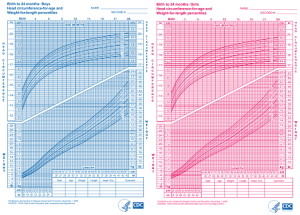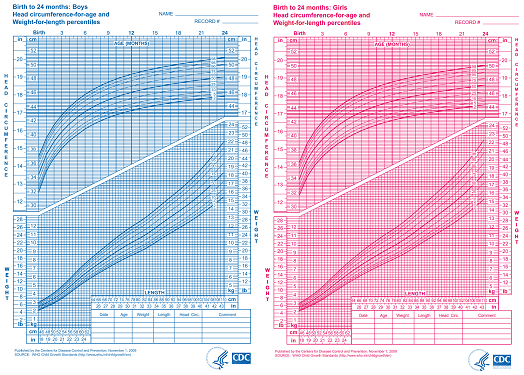Blog
Height and Weight Chart for Kids: A Guide to Monitoring and Supporting Growth
The height and weight chart for kids is an important tool that helps parents evaluate whether their child is developing properly. A healthy child not only needs to have a suitable weight but also an optimal height according to their age. How can we understand and use this chart effectively? This article provides detailed information about the WHO standard chart, how to monitor your child’s growth, and the role of Hito Tall – a dietary supplement from the USA – in supporting children to reach their ideal height.
1. What Is the Height and Weight Chart for Kids?
The height and weight chart for kids is a tool developed by the World Health Organization (WHO), providing standard values for height and weight according to age and gender. This chart helps parents and doctors assess a child’s physical development and detect early issues such as malnutrition, obesity, or slow height growth.
According to WHO, the chart is divided into percentiles, including:
- 50th percentile: Represents the average level, where 50% of children of the same age reach this height/weight.
- 3rd and 97th percentiles: Indicate that a child may be at risk of stunting or obesity if they fall outside this range.
Examples of standard height and weight:
- 3 years old: Boys – 94–100 cm, 13–15 kg; Girls – 92–98 cm, 12–14 kg.
- 10 years old: Boys – 135–142 cm, 28–34 kg; Girls – 134–141 cm, 27–33 kg.
- 14 years old: Boys – 158–165 cm, 45–55 kg; Girls – 152–158 cm, 42–52 kg.
If a child’s height falls below the 3rd percentile, nutritional or medical intervention may be needed to optimize their growth.

2. The Importance of Monitoring the Height and Weight Chart
Tracking the height and weight chart for kids helps parents:
- Assess development: Determine whether a child is growing at a healthy rate or lagging behind peers of the same age.
- Detect problems early: Slow height growth may be caused by nutritional deficiencies, hormonal disorders, or underlying health conditions.
- Adjust care plans: Provide suitable nutrition, physical activity, and sleep to improve height and weight.
According to research from the Children’s Hospital, kids who experience slow height growth before age 18 may fail to reach their genetic potential, affecting confidence and future opportunities. Therefore, using the chart for monitoring is the first step to ensuring well-rounded development.
Read more:
3. How to Use the Height and Weight Chart
To effectively use the height and weight chart for kids, parents should:
- Measure accurately:
- Height: Use a measuring tape or stadiometer; ensure the child stands straight and barefoot.
- Weight: Use a digital scale and measure in the morning before meals.
- Height: Use a measuring tape or stadiometer; ensure the child stands straight and barefoot.
- Record regularly: Take measurements every 3–6 months to track growth trends.
- Compare with the WHO chart: Check the chart on the WHO website or through a child health app.
- Consult a doctor: If the child is below the 3rd percentile or shows no height increase for 6 months, a medical check-up is recommended.

Real-life example: A 10-year-old boy who is 130 cm tall (below the 3rd percentile) and weighs 25 kg (10th percentile) may need nutritional support and growth hormone (GH) evaluation.
4. Nutrition to Help Kids Reach Chart Standards
To help children meet the standard height and weight ranges, nutrition plays a key role. According to World Health Organization (WHO), kids need:
- Calcium: 700–1300 mg/day depending on age, from milk, cheese, salmon, spinach, or chia seeds. One 200 ml glass of milk provides 300 mg of calcium.
- Vitamin D: 600–800 IU/day from sunlight (15–20 minutes/day), fatty fish, or supplements.
- Protein: 1–1.5 g per kg of body weight from chicken, eggs, tofu. For example, 100 g chicken breast provides 30 g protein.
- Vitamin C: 45–65 mg/day from oranges, kiwi, bell peppers — supports collagen production for growth plates.
- Vitamin K2: Helps direct calcium into bones, found in cheese, egg yolk, or natto.
Sample meal plan:
- Breakfast: 200 ml milk, whole-grain bread, 1 egg, 1 orange.
- Lunch: Brown rice, pan-seared salmon, spinach and red bell pepper salad.
- Dinner: Grilled chicken, sweet potato, steamed broccoli.
- Snacks: Almonds, yogurt, or 1 Hito Tall tablet.
5. Hito Tall – A Supportive Solution for Reaching Growth Standards
If children struggle to meet height chart standards due to picky eating or nutritional deficiencies, Hito Tall can be an ideal solution. This U.S.-made supplement is designed for kids aged 6–18 and contains:
- Nano Calcium: 200× better absorption than regular calcium, strengthens bones and supports lengthening.
- Vitamin D3 (800 IU): Enhances calcium absorption into bones.
- Vitamin K2 (MK-7): Directs calcium to bones, preventing buildup in blood vessels.
- Vitamin C (50 mg): Supports collagen formation and cartilage elasticity.
- Magnesium & Zinc: Support muscle and bone development.
Based on user feedback: Children aged 10–12 grew an average of 5 cm after 4 months. Teens aged 13–16 grew 6–8 cm after 6 months. The product meets GMP standards, is safe, and has no reported side effects.

How to Use Hito Tall:
- Children 6–12 years old: 1 tablet per day after meals.
- Children 13–18 years old: 2 tablets per day, taken in the morning and evening.
- Drink 1.5–2 liters of water per day to enhance absorption.
Note: Consult a doctor before use, especially if the child has underlying conditions such as kidney stones.
6. Exercises to Support Growth According to the Height and Weight Chart for Kids
Regular physical activity helps children reach the ideal height according to the height and weight chart for kids:
- Swimming: 30–45 minutes/day, 4–5 times/week — stretches the spine and stimulates growth plates.
- Basketball: Jumping and running can increase height by 3–5 cm after 6–12 months.
- Yoga: Poses like Cobra and Warrior improve flexibility and posture.
- Pull-ups: Hanging for 5–10 minutes/day reduces spinal pressure.
7. Sleep – A Key Factor
Growth hormone (GH) is secreted most actively between 10 p.m. and 2 a.m. during deep sleep. To optimize growth:
- Sleep duration: 8–10 hours/night (ages 6–12), 7–9 hours/night (ages 13–18), sleep before 10 p.m.
- Sleep environment: Dark, quiet room with a temperature of 20–22°C.
- Habits: Avoid phones, computers, or caffeine before bedtime.

8. A Healthy Lifestyle Supports Growth
- Avoid stress: Chronic stress reduces growth hormone (GH) levels. Encourage outdoor activities for relaxation.
- Stay hydrated: Drink 1.5–2 liters of water per day to support metabolism.
- Limit junk food: Foods high in sugar and fat can hinder nutrient absorption.
9. Common Mistakes When Using the Height and Weight Chart for Kids
- Skipping regular measurements: Not tracking height and weight regularly can cause parents to miss early warning signs.
- Incorrect comparisons: Comparing your child to peers without referencing the WHO chart can lead to misjudgment.
- Ignoring nutrition: Lack of calcium, vitamin D, or protein slows growth.
- Sleeping late: Reduces GH secretion and affects height development.
10. Conclusion
The height and weight chart for kids is an essential tool for parents to monitor and support their child’s healthy development. Combining balanced nutrition, regular exercise, quality sleep, and Hito Tall helps children achieve standard height and unlock their full genetic potential. Start tracking and caring for your child today to ensure a healthy and confident future!
Call to Action: Learn more about Hito Tall on the official website or consult a nutrition expert for detailed advice. Don’t miss the opportunity to help your child reach their ideal height!
